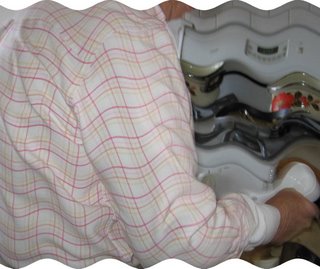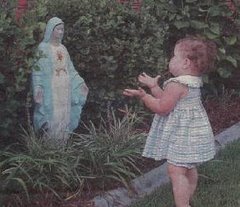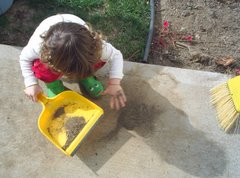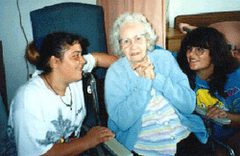The first prayer of the old Latin Mass is from David's Psalm 43: 4-5 and contains the phrase, "to God the joy of my youth." This prayer recognizes the joyous encounter of King David as a child with God. This post tries to understand why David had such a joyful childhood, and how his happy childhood might be imitated today.
Almost everyone knows David was annointed King of Israel by Samuel, killed the Philistine giant Goliath with a slingshot, and was the most famous Israelite King in history. Yet there is no history of his early life tending the sheep while his brothers followed King Saul. What is the life of a young shepherd when he later refers to "God, the joy of my youth"?
In the Middle East, rocks are used to construct fence walls and enclosures for animals. With the help of his dog, David probably penned his small flock of sheep in one of these enclosures at night. Even while sleeping next to his dog, he would have sensed problems with the sheep (they are good at baa-ing if they sense trouble).
David would have been delighted at the birth of new young lambs, and their finding their mothers to nurse for the first time. Perhaps he would have coaxed a ewe who had a stillborn lamb to accept one of triplet lambs.

At night, David would feel a chilly wind and wrap himself more tightly in his wool blanket. He would have heard the many natural sounds of night, and would have been transfixed at meteors darting across the random array of stars. There would have been a silence in the countryside that was not present in his village.
In the early morning, the dog would have arisen at the sound of awakening sheep. David would have quickly packed his food and water for the trek. Then he would enter the pen, count his sheep, and made sure that all of them were able to move to the graze. After the sheep would have been let out of the pen, David and his dog would have kept them moving to the graze. The early morning temperature would have been cool, but the fast walking would have warmed the young shepherd. On the way, the sheep would stop at a creek for water, and David and his dog would have drunk too.
If a ram were around, David would keep a close eye on him because of having bruises from being butted hard in the past. The young shepherd would have a wood stick with a hook on the end of it--to use in walking, to protect himself from rams, and to capture sheep by hooking their rear leg. David would have looked often at the well-worn crook that had been passed down to him when his grandfather died.
A new grazing area would have been at some distance from the protected holding pen, and the sheep were always extra hungry when reaching their graze. During the time when they were unsettled, David and his dog would have worked hard to keep the sheep from wandering off to nearby trees and shrubs. Before too long, the sheep would have recognized the boundaries of their graze, because the dog would nip and bark when the sheep started to move outside the designated area.
David's flock would have settled into a pattern of moving across their graze. The grazing pattern
usually takes the shape of a fan with the flock's dominant sheep at the apex of the curve. The sheep methodically "mow" the grass as they move across the meadow. They maintain the fan shape most often when they are eating grass that is uniformly shorter than about six inches. If the sheep are grazing sparse patches of grass, a stubble field, lush tall grass or a planting of diverse species, the flock will not graze in a unified pattern. Instead, each member of the flock will be looking for the biggest bite of sparse or tall grass, and in the case of a diverse planting, each sheep will be searching for his favorite morsel.
David observes the sheep grazing contentedly for a while and he sits on a rock to eat a late-morning meal. The dog joins him and lays down at David's feet to eat small pieces that he knows will drop from David's bread, cheese, and meat. When the sheep begin to approach forbidden or dangerous areas, David arises from the rock to work with his dog to bring the sheep back to the intended grazing area. The sun is bright, the grass is green, and the world looks very good to David. Or it is cloudy and he suffers through a damp, chilly day to look forward to the good weather he knows he will probably have tomorrow.
In the late afternoon, the sheep are herded the long way back to the holding pen. David and his flock stop at a small stream so that the sheep can drink. While the sheep are drinking, David picks up stones and sticks to toss in the water, or if the water is wide, he throws stones from his sling, making them skip across the water. He found life in the water--snails, frogs, water spiders, crayfish, or small minnows. He kept one eye on the sheep, but I suspect David stayed at the stream to play for as long as he dared.
When David arrived with his sheep at the holding pen, he would have looked each one over carefully before penning them. As he touched the sheep, his hands would have absorbed some of the lanolin in the wool. [A sheepherder's hands are never rough.) His mother, or one of his father's servants, would have brought him food for the evening and the next day. They would have exchanged details of the day's events. Other boys would have arrived and David would have shown them the special rock or toad he had found. They would have discussed the children in the next village who recently saw a wolf.
A joyful youth such as David experienced is what we want to give our children. I experienced such a joyful childhood because of the creek and animals on my Grandma's and our adjacent farms.
There is a great joy playing in the creek and lifting a rock and finding a crawdad. If you're fast enough, you can grab him behind the pincers and put him in an old bucket. Maybe you can build a dam of rocks to hold a little pool of water. If you catch a minnow with a butterfly net, you can put it in the little pool, but he'll probably find a way out. Or you can take a cold drink from the pipe coming out from the deep, spring-fed well by the creek. Or you can look at the puffy clouds and make believe you see a horse, a bird, or a snowman.
you're fast enough, you can grab him behind the pincers and put him in an old bucket. Maybe you can build a dam of rocks to hold a little pool of water. If you catch a minnow with a butterfly net, you can put it in the little pool, but he'll probably find a way out. Or you can take a cold drink from the pipe coming out from the deep, spring-fed well by the creek. Or you can look at the puffy clouds and make believe you see a horse, a bird, or a snowman.
Some of my grandchildren are blessed to live on some acreage adjacent to a creek, and their mother tells me they play all day without being bored. Water in the creek flows over a concrete abutment, and the creek is slightly deeper there. Frogs, minnows, crawdads and some water snakes are easily found.
Once I went to Home Depot or Lowe's and bought an 80-pound bag of concrete mix. One of the grandkids got the wheelbarrow to take some of the concrete mix down near the creek. We took a gallon plastic milk jug, cut out the top, but left the handle. The kids put some water in it and added some concrete mix. They stirred it with a stick, then dumped succesive jugs of the wet mix in the creek to form a dam. Best $3.75 I ever spent on a toy! [BTW, the grandkids were told that they had to wash their hands in the creek whenever they got concrete on them.]
The Natural Wildlife Federation [not necessarily recommended for all their positions] has an interesting article excerpted from the book, Last Child in the Woods: Saving Our Children from Nature-Deficit Disorder. The author observes:
A child today can likely tell you about the Amazon rain forest but not about the last time he or she explored the woods in solitude or lay in a field listening to the wind and watching the clouds move. Parents cite several everyday reasons why their children spend less time in nature than they did. Among them: diminishing access to natural areas, competition with electronic entertainment, and time pressures, including increased homework and longer school hours.I believe people have joyful childhoods when they grow up in the outdoors and experience natural flowing water such as creeks. They also learn responsibility when they must take care of animals, like young David did. Do what you can to bless your children with a childhood that makes them acknowledge "God, the joy of my youth."









No comments:
Post a Comment